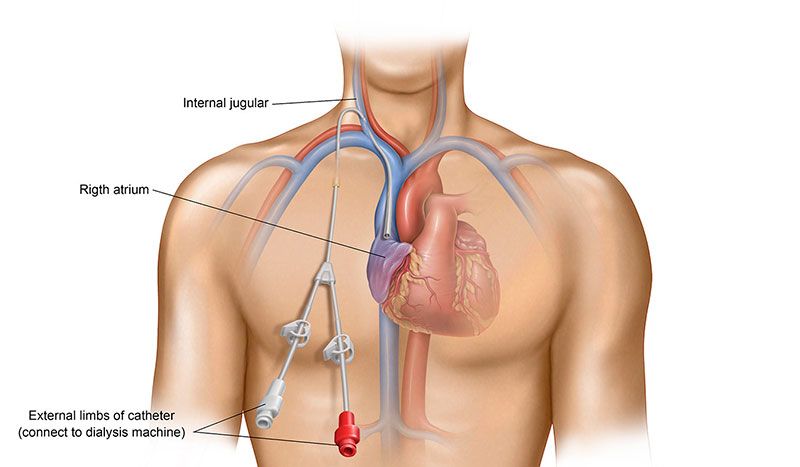A central venous catheter is a long, plastic, y-shaped, flexible tube. During an outpatient procedure, a physician who specializes in vascular access makes a small incision in the skin over the selected vein located in the neck, upper chest, or groin. Then, using a guide wire the catheter is inserted into the vein.
Central-venous-catheter
The terminal section of the CVC (Central Venous Catheter) protrudes externally from your body. The pair of pliable tubes extending from the Y-shaped end of your CVC are linked to the bloodlines during dialysis. This connection facilitates the movement of blood to and from your body through the dialysis machine. To safeguard these tubes when not in use, a protective cap is affixed at the terminus of the Y-shaped configuration.


